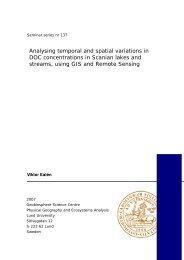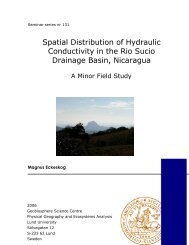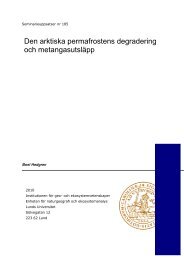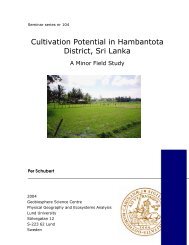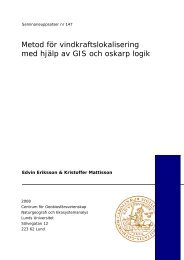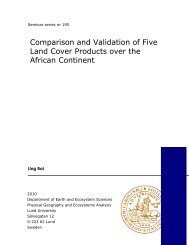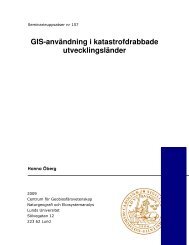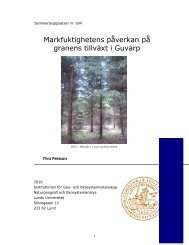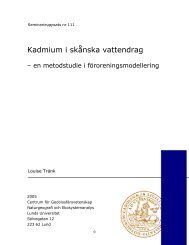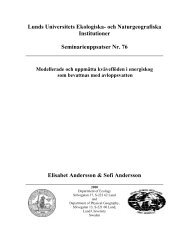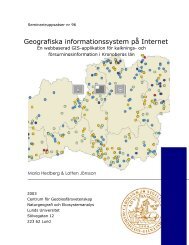Finding Potential Sites for Small-Scale Hydro Power in Uganda: a ...
Finding Potential Sites for Small-Scale Hydro Power in Uganda: a ...
Finding Potential Sites for Small-Scale Hydro Power in Uganda: a ...
Create successful ePaper yourself
Turn your PDF publications into a flip-book with our unique Google optimized e-Paper software.
and generator is 65% and 80% efficient respectively, then the calculation to determ<strong>in</strong>ethat schemes power potential will be as follows:1. Net head:0.25 ⋅ 60 = 15m60 -15 = 45m2. Hydraulic power:45 ⋅ 10⋅9.81=4414W3. Mechanical power:4414 ⋅ 0.65 = 2870W4. Electrical power:2870 ⋅ 0.8 = 2295W or 2.3kW3.2.3 Environmental Aspects<strong>Small</strong>-scale hydro is one of the most environmentally benign methods of powergeneration and the most significant environmental consideration is that it does not haveany k<strong>in</strong>d of emissions, which usually are associated with conventional energy resources.However, small-scale hydro is not totally without environmental problems (Fraenkel etal. 1991).To beg<strong>in</strong> with, even if the small-scale hydropower scheme itself does not generate anyemissions, there are still some emissions associated with the technology dur<strong>in</strong>g other lifecycle stages. The cha<strong>in</strong> of manufactur<strong>in</strong>g processes required to manufacture andconstruct the generation and transmission equipment, e.g. penstocks, turb<strong>in</strong>es, generatorsand cables, are a important source of emission (IEA, 1998). A study was per<strong>for</strong>med <strong>in</strong>Northwest of America, to calculate emissions from the manufacture of materials used <strong>in</strong>construction of hydropower schemes. The study calculated the atmospheric emissions ofcarbon dioxide (CO 2 ), sulphur dioxide (SO 2 ), oxides of nitrogen (NO x ) and particulatesper unit of material manufacture of steel, concrete, copper and alum<strong>in</strong>ium <strong>for</strong> a site witha total capacity of 40.8 MW. The results show emission values of 8.6 g/kWh of CO 2 ,0.025g/kWh of SO 2 , 0.068g/kWh of NO x and 0.005g/kWh of particulates (ORNL/RfF,1994). These emissions are significantly less than those aris<strong>in</strong>g from conventional fossilfuel stations. For example, they have approximately half the direct emissions from a newbuild coal power station, with flue gas desulphurisation (EC, 1995). It should also beemphasized that the example is a relatively large project and is likely to represent theupper limit of emissions <strong>for</strong> most small-scale hydropower schemes (ORNL/RfF, 1994).20



